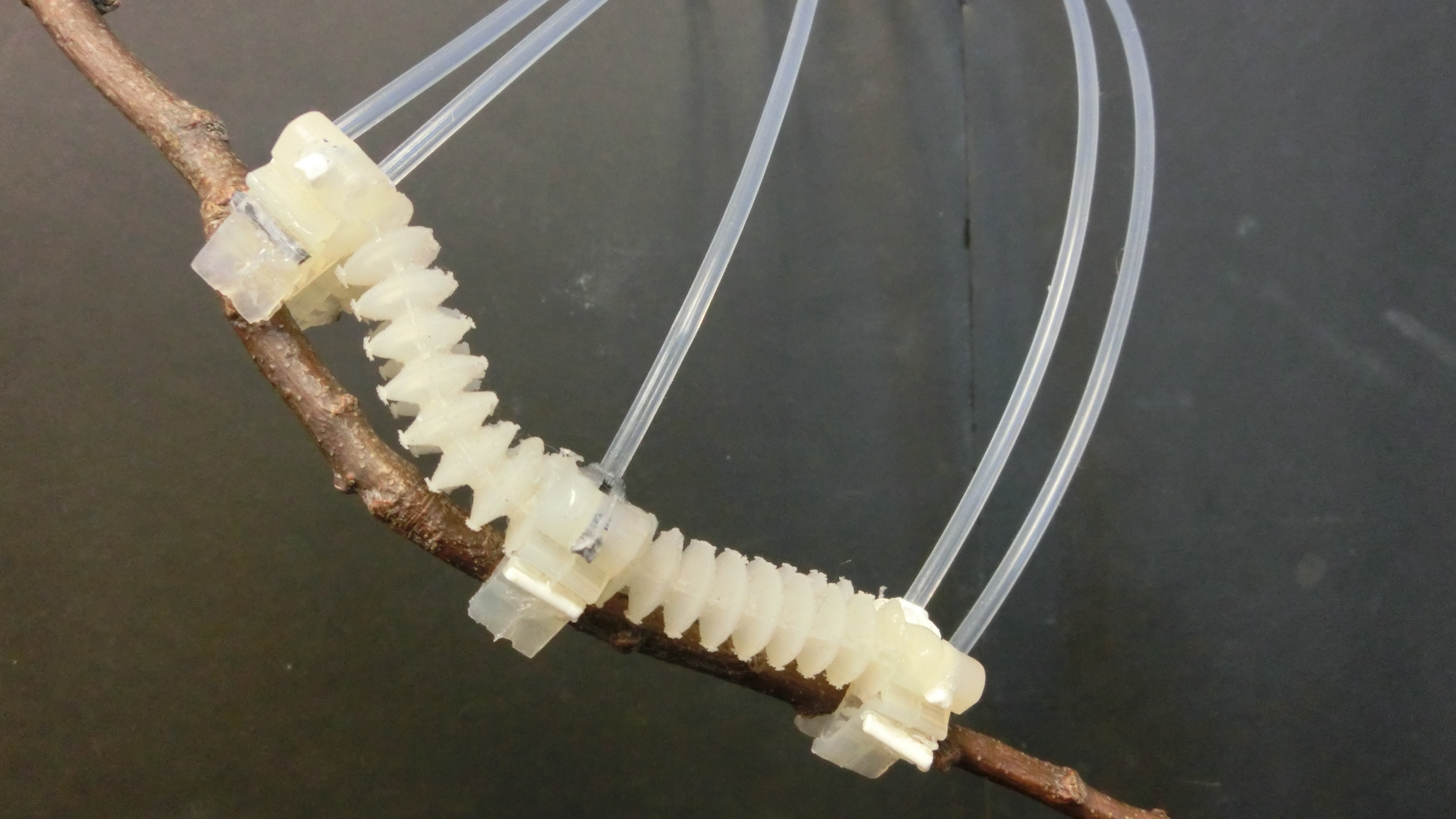Branch Bot is a biomimetic soft robot designed to study caterpillar locomotion.
It has three soft passive grippers and two springy body segments. It is actuated using offboard
motor tendon systems which connect to the robot using Bowden cables. The motor tendon system are controlled
to act like muscles. The robot’s soft body allows it to crawl along branches using the same
gait it uses for straight dowels. At the time of publication, Branch Bot was one of the fastest branch/tree climbing
soft robots.
A video of the tethered version of branch bot crawling horizontally, vertically, and on branches.
Later as part of my MS Thesis I made Branch Bot untethered by moving the control, power, and actuation onboard.
As a part of this process I designed and manufactured a simple closed loop motor control unit which did position control
on two DC motors and received inputs over I2C.
The untethered version of Branch Bot
Associated Publication
-
Passive gripper inspired by Manduca sexta and the Fin Ray® Effect
Crooks, Whitney,
Rozen-Levy, Shane,
Trimmer, Barry,
Rogers, Chris,
and Messner, William
International Journal of Advanced Robotic Systems
Jul
2017
Soft robotic grippers are advantageous for tasks in which a robot comes into close contact with a human, must handle a delicate object, or needs to conform to an object. Most soft robotic grippers, like their hard counterparts, require actuation to maintain a grip on an object. Here, we present a passive, soft robotic gripper that requires power to open and close but not to maintain a grip, which can be problematic in environments with limited energy availability (e.g. solar or battery power). Passive grip, by not requiring power to maintain grip on an object, provides a unique and safe alternative to energy-limited or energy-scarce environments. The Tufts Passive Gripper was inspired by the passive grip of the Manduca sexta and the simplicity of the Fin Ray® Effect. The gripper can be three-dimensional printed as one part on a multimaterial three-dimensional printer and only requires four additional steps to install the motor/tendon actuation mechanism. The gripper was capable of picking up over 40 common household objects, including a tissue, a pen, silverware, a needle, a stapler, a cup, and so on. The maximum load a gripper could hold when oriented perpendicular and parallel to the ground was 530 g (1 lb) and 240 g (0.5 lb), respectively.
-
The design and development of Branch Bot: a branch-crawling, caterpillar-inspired, soft robot
Rozen-Levy, Shane,
Messner, William,
and Trimmer, Barry A
The International Journal of Robotics Research
Jan
2021
A soft climbing robot has the potential to access locations such as wiring ducts and tree canopies that are unreachable by humans and traditional rigid robots. In addition, a soft robot is robust and can fall without damaging itself or its environment. We present a soft, branch-crawling robot that is inspired by the passive gripping mechanisms used by caterpillars. The conformability of the robot’s soft body makes it uniquely suited to move in a complex 3D environment. A key innovation is that grip release is actively controlled and coordinated with propulsion generated by stored elastic energy. The robot is molded from silicone rubber and actuated using remote motor-tendons coupled to the structure through Bowden cables. Grip is achieved passively through an elastic flexure that pushes a compliant finger against the dowel. Experimental results show that the gripper is easily able to support the weight of the robot, and that the body structure allows the robot to crawl horizontally, vertically, and along branches. This robot demonstrates some key advantages of a soft robotic platform over traditional rigid robots.

